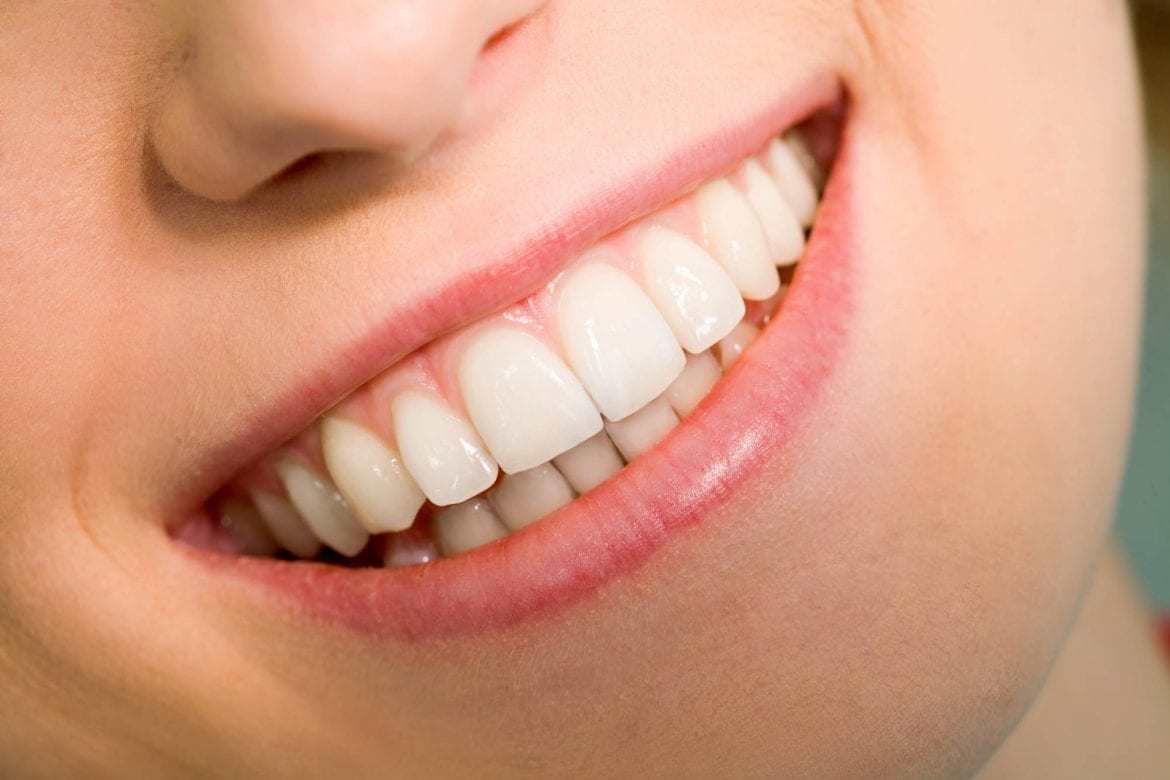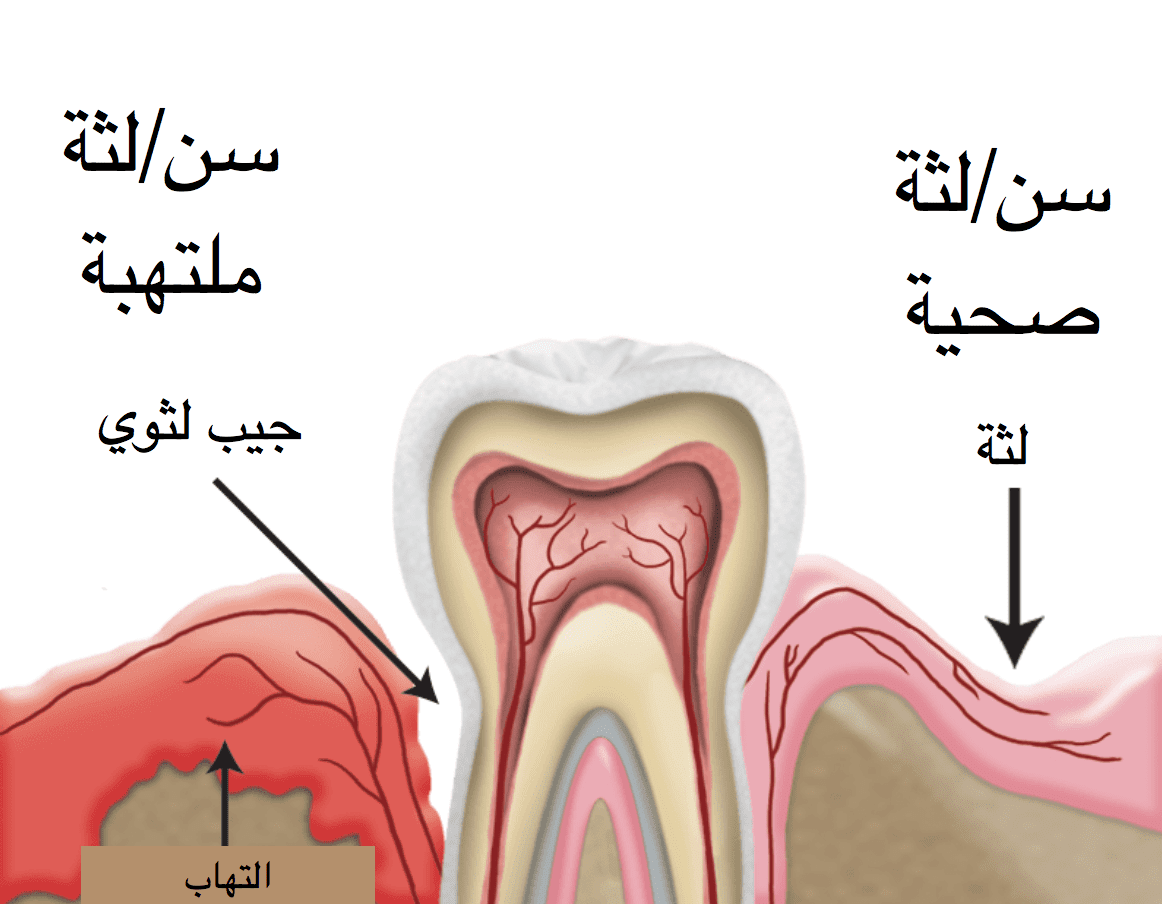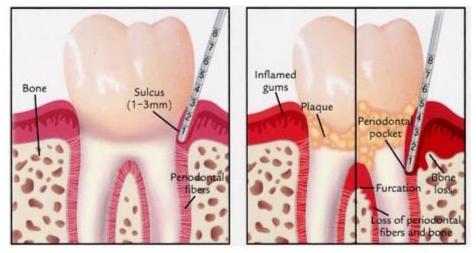If pockets are formed in the gums, it is necessary to clean these pockets completely (via a dentist), and the part adjacent to the pockets of the roots of the teeth (dredging) should be completely eliminated from the formed bacteria.
Recently, pocket surgery can be performed and sterilized by laser in the clinic.
Check with your doctor every 4-6 weeks to follow up on the condition and make sure that the healing occurs.
When the depth of the pocket is more than 4-5 mm and there is no response to the treatment with the continued erosion of the bone, the surgeon uses surgical intervention, which aims to detect the affected part of the gums and roots of the teeth to ensure the removal and cleaning of all calcareous deposits and contaminated tissues. . Drugs and antibiotics prescribed by the dentist should also be used to kill the bacteria causing the pockets.
In the event of significant bone damage, the missing part is restored and the teeth are re-strengthened in the jaw by using a special graft to stimulate growth of the bone and gingival tissue in a certain direction to restore its previous position.
Curettage and root planing cleans up under the gums. If you have periodontal disease, you need scraping to ensure the cleaning process goes deeper, around the roots of the teeth. This is known as smoothening of the root. Your dentist may give you a local anesthetic to make this process more comfortable. It is usually done manually and most cases just need two visits.




